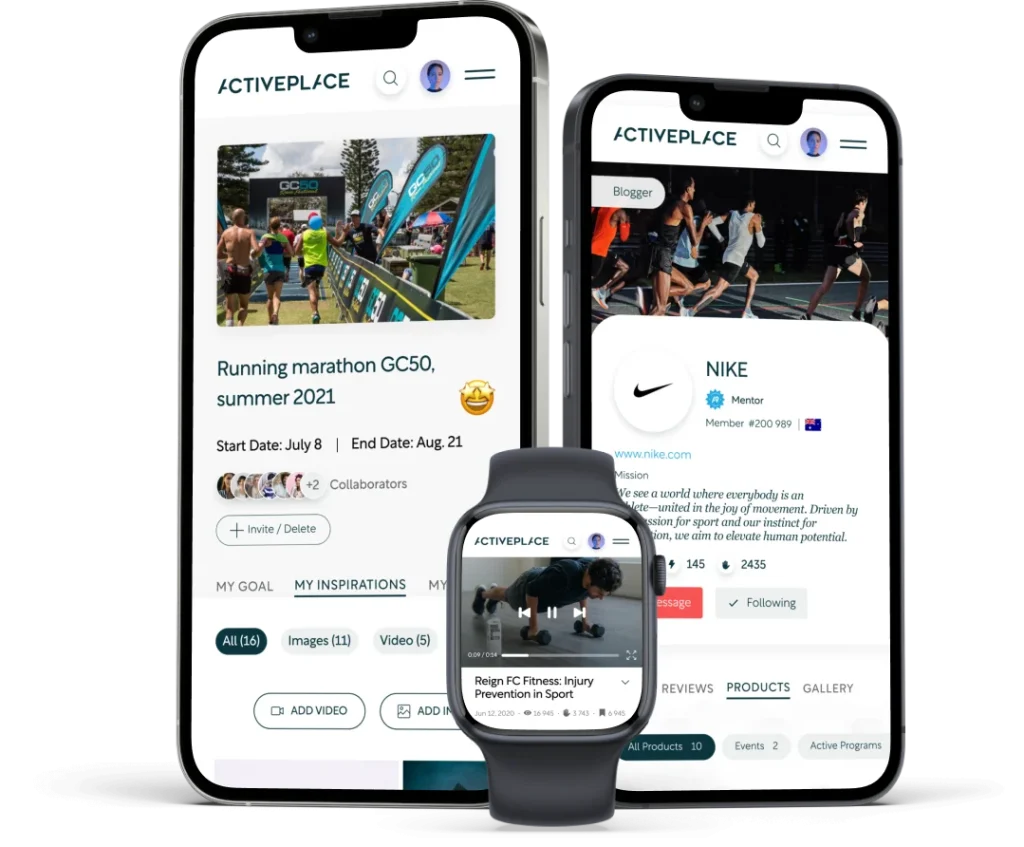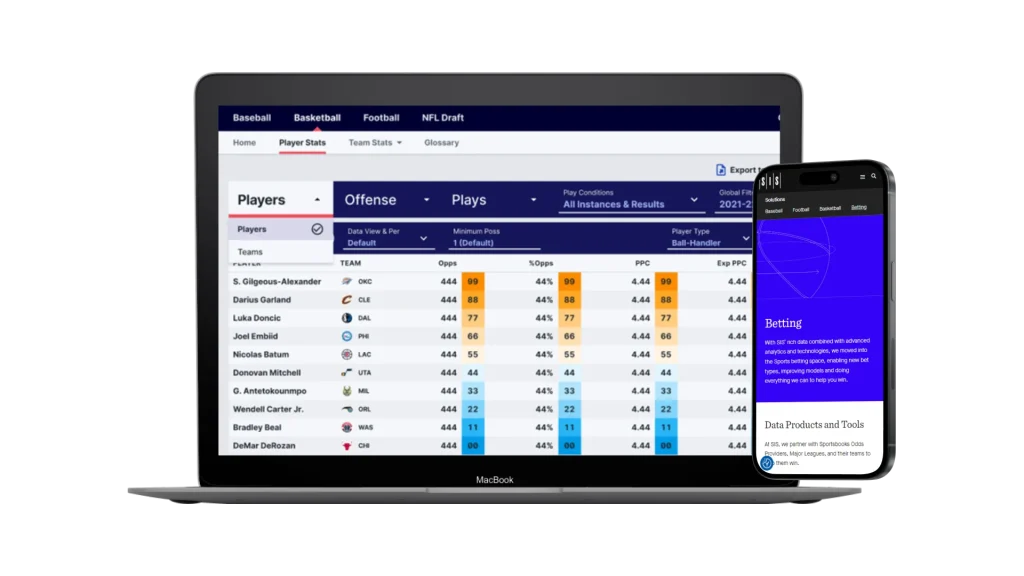We can provide a pure HTML/CSS-based front-end. It involves creating a static landing page with fixed content, optimized for SEO and different screen sizes. Using HTML 5.0, CSS 3.0, and JavaScript ES6 stack.

Make Beautiful Design Count
We know your brand offers a beautiful promise - and so is your design. Make those judging the book by its cover experience the deeper value of your product's performance: let Devox help optimize your front end web development.
We can help you if there are the following issues:
• Speed and responsiveness;
• Poor cross-device or cross-browser compatibility;
• Technical debt in existing front-end code;
• UI/UX design and development disconnect;
• Scalability bottlenecks.
Front End Development Services We Provide
Let us cover the nuances of Front End Development for you seamlessly.
-
HTML/CSS/JavaScript development
-
Single-page development (SPA)
Get a single HTML page that will dynamically update content as the user interacts with it, minimizing page refreshes for a smoother experience. Working with React, Angular, and Vue frameworks.
-
Progressive web app development (PWA)
Upgrade your SPA to PWA for a small additional cost within one project or get it developed from scratch. Enable offline access, faster load times, and installability, while taking the easiest way to make your app available for mobile.
-
Mobile app front-end
The Devox team leverages the potential of React Native, Ionic and Flutter frameworks to create front-end for cross-platform or native mobile apps.
-
Legacy front-end modernization
We help update an older or outdated front-end codebase to make it more modern, efficient, and effective. Our team picks an appropriate front-end framework for the project, considering the size of the codebase and its complexity.
Design Thinking We Adopt
Design thinking is an approach to developing product’s UI/UX. As a professional front end web development company that pays extra attention to aesthetics and user satisfaction, Devox adopts a design thinking approach, emphasizing empathy, user-centeredness, creativity, and collaboration. This is how we tackle complex problems and harness innovation for your next app, regardless of its purpose and complexity – all to make a truly user-friendly product that brings value to your clients.
-
Discovery/Empathizing
We get acquainted with your project requirements and needs, seeking to understand your audience and shape design goals accordingly. At this stage, we put an emphasis on empathy, striving to understand the field and set tasks for further research.
-
Research/Definition
This is when we paint a portrait of your potential user, answering all the related questions about them. We construct user persona, define the role objectives, calculate challenges and spot the pains. You will get a competitive analysis and a customer journey map.
-
Ideation
It’s time for ideas generation: you can join us in this process or fully delegate it to us. We’re working out a structure and layout, delivering wireframes, user flow, information architecture, business model canvas and value proposition canvas.
-
Prototype
This stage is where the creativity takes physical shape. We deliver mockups and storyboards, developing a custom style with style-picked color palettes and typography. Eventually, you will get a clickable prototype that your users may check and give feedback on even before the application is developed, UI style guide, motion and design system.
-
Test
Finally, we monitor user behavior to understand what works in terms of design and what doesn’t. We form focus groups and use different tracking tools, conducting different types of testing (A/B testing, usertesting, screen-tracking) and thoroughly gathering feedback.
Patterns We Choose for Front-End Development
Component Architecture
A design approach that structures software systems as a collection of reusable, self-contained components. Each component represents a piece of functionality and can be combined to build more complex applications. This concept is commonly used in front-end development with frameworks like React and Angular.
Atomic Design
A methodology that structures the UI by breaking it down into fundamental building blocks: atoms, molecules, organisms, templates, and pages. Atoms are the smallest elements like buttons and inputs, molecules are combinations of atoms, organisms are more complex UI components made of molecules, templates define layouts using organisms, and pages are fully fleshed-out views. This approach helps in creating a consistent design system and a more structured development process.
State Management
The process of managing and maintaining the data and application state in a software system. It involves storing and updating information, such as user input, application settings, or data retrieved from external sources. Effective state management is crucial for maintaining a consistent and responsive user experience. Common tools include Redux, MobX, and Vuex.
Server-Side Rendering (SSR)
Server-Side Rendering involves generating the HTML of a web page on the server rather than in the browser. This approach improves initial load times and SEO, as the content is rendered before it reaches the client. SSR is particularly useful for content-heavy applications or those that need to perform well on search engines.
Progressive Web Apps (PWAs)
Progressive Web Apps are web applications that use modern web capabilities to deliver an app-like experience to users. They are designed to be reliable, fast, and engaging, working offline or on low-quality networks. PWAs can be installed on a user’s device and offer functionalities like push notifications, making them a powerful option for creating a seamless user experience.
Micro Frontends
An architectural pattern that extends the microservices concept to the front-end. It involves breaking down the user interface into smaller, independent modules or applications that can be developed, deployed, and scaled separately. Each micro frontend typically has its own technology stack.
Composable Architecture
Composable Architecture involves building a frontend by combining smaller, loosely coupled components or services. Instead of a monolithic approach, the application is composed of independent modules that can be developed, updated, and scaled separately. This allows for greater flexibility, as components can be easily replaced or upgraded without impacting the entire system.
What You’ll Get With Optimized Front End




Make Users Stay
No more bounce rates, abandoned carts or unfinished actions on the page: leverage truly responsive, intuitive and visually appealing user interfaces thanks to Devox's expertise, making it easier for users to navigate and interact with your product. Our team constructs the layout diligently following Gang-of-4 principles, relying on your users' behavior and tech capabilities.
Provide Comfort Like Nobody Does
Be positive your product is compatible across as many devices as your potential clients switch between. We'll take care of faster load times and smoother interactions, adapting your platform to various screen sizes, including desktops, tablets, and smartphones, and increasing your reach and accessibility. Adopting a mobile-first approach, we focus on progressive UX buildup, touch-friendliness, and cross-device consistency by prioritizing dynamic values.
Let Your People Find You
Be right there in a short distance of one google search: if SEO optimization and search engine work matters for your product, we engage server-side rendering, which is the most efficient technology in the realm of SPA to support robot crawling. Get better search engine rankings, improving your project visibility in search results.
Future-Ready in Advance
Don't lose anything mentioned above when you decide to grow. Well-structured front-end code makes it easier to scale your product or application as your business grows, allowing for the addition of new features and content without major disruptions. To achieve this, we employ design patterns for competent code to make it easier for developers to work with it in the future.
Trusted by
Industry Contribution Awards & Certifications
Testimonials
Some Insights Into Front End Development
Questions You May Have
-
How do you ensure performance and speed in front-end applications?
We develop front end web apps focusing on measurable runtime efficiency, not just initial load speed. Our team performs dependency pruning, prioritizes asynchronous loading strategies, and applies static asset optimization based on your users’ geography and device distribution. We apply edge rendering and CDN-level caching strategies for high-traffic applications to reduce TTFB across all regions.
As a front end development company, we implement granular performance budgets, monitor long-task blocking time, and optimize JavaScript execution paths for both interaction and paint metrics. The result is consistent speed, lower dropout rates, and a front end that can be easily adapted to your product’s development.
-
Can you help with front-end migration from legacy frameworks like jQuery or AngularJS?
Yes, we handle legacy front-end migrations with architectural precision and without compromising core functionality. Whether you’re moving to React, Vue, or Next.js, we deconstruct outdated logic, isolate dependencies, and create a clean upgrade path that preserves business-critical workflows.
Our front end for web development approach includes automated codebase analysis, refactoring plans that follow modern best practices, and a controlled rollout strategy that avoids regression risks. If required, we support hybrid migration phases so that parts of your platform can work alongside old and modern code until the complete changeover.
Every front end app developer on our team is trained to work with legacy architectures, including monolithic user interfaces with convoluted state or embedded logic. We apply component abstraction, define clear interface contracts, and perform scoped refactoring to deliver a faster, more maintainable frontend experience.
-
How do you approach mobile responsiveness and cross-browser compatibility?
We consider the diversity of devices and browsers an essential technical requirement. For every front-end app development front end project, we start with adaptive layouts, fluid grids, and responsive breakpoints tailored to your real user base.
Our QA flow includes structured cross-browser testing with Chrome, Safari, Firefox, Edge, and mobile native browsers using real devices and emulators. We validate layout shifts, interactive elements, and scrolling behavior under different rendering engines and input methods (touch, keyboard, pointer).
Every web developer, front end developer on our team follows accessibility and compatibility standards (WCAG, ARIA, browser-specific fallbacks) and works with design tokens, relative units, and system-appropriate styles to ensure consistency. We also monitor layout and interaction metrics post-deployment to detect bugs in production and deploy hotfixes via automated pipelines when needed.
-
What is your process for front-end testing and quality assurance?
Our QA approach is tightly integrated into all front-end web development services — not as a final checkpoint but as a continuous discipline from the first commit to the production release. We develop automated tests as early as the architecture phase that focuses on component logic, user interface flow, accessibility compliance, and integration behavior.
For complex front end web applications, we implement multi-stage tests:
- Unit tests for individual components
- Integration tests for user interactions and API behavior
- End-to-end tests that simulate real use on different devices and browsers
- Visual regression tests to detect layout or style deviations
- Performance and accessibility tests, integrated into the CI pipeline.
We use tools like Jest, Playwright, Cypress, and Axe, validating across multiple environments to maintain parity between staging and production. All tests are versioned, traceable, and automatically triggered by Git workflows.
-
How do you handle SEO optimization in front-end-heavy apps like SPAs?
We integrate SEO as a structural part of front end web application development, not an afterthought.
We configure semantic markup, structured data (JSON-LD), open graph tags, and canonical URLs. For SPAs, we apply hydration-aware routing, dynamic meta updates, and crawl-friendly link handling. Our front-end web developers leverage SSR, SSG, and dynamic pre-rendering strategies to make your content instantly discoverable and indexable by search engines from day one.
In this way, your app remains fast, findable, and meets search engines’ expectations, even if it was created as a dynamic SPA.
-
Do you use AI in your front-end development approach?
Yes, AI is deeply integrated into our front end application development workflows. We use it to accelerate design-to-code conversion, detect layout inefficiencies, automatically generate test coverage, and optimize interaction performance based on real-world usage data.
During the web design front end phase, we use AI-powered prototyping tools and UI audits to improve responsiveness, accessibility, and usability on different devices. Once designs are approved, our AI tools help create a component framework that aligns the code structure with the intended visual and UX behavior.
We also synchronize front-end efforts with back end development services using AI-driven dependency mapping, API schema validation, and automated CI/CD integration, delivering end-to-end deployment across the stack. The result is fewer bugs, shorter iteration cycles, and cleaner handovers between teams.
-
What is the best language for front-end development?
There is no single “best” language for front-end web development services as different languages are suited for different purposes and have their own strengths and weaknesses.
At Devox Software, we use the most popular ones like JavaScript, HTML, and more.
-
Why is front-end needed?
Front-end development is needed to create the user interface and user experience of a website or app. As a top-tier front-end web development company, we focus on the aspects of a website or application that users directly interact with. This includes the layout, design, and functionality of the user interface, such as buttons, forms, menus, and other visual elements.
The front-end is important since it directly affects the user experience of a website or application. A well-designed and functional front end can make a website or application more user-friendly and easier to use, leading to higher user satisfaction and engagement.
-
What is more important: front-end or back-end?
Both front-end and back-end development are equally important for building a successful website or application. They are complementary and work together to create a complete, functional system.
Front-end developer services focus on creating the user interface and user experience of a website or application. It involves using HTML, CSS, and JavaScript to create a visually appealing and interactive user interface that is optimized for different devices and screen sizes.
On the other hand, back-end development concentrates on the server-side of a website or application. It entails developing the database architecture, logic, and algorithms that underpin the front end. This involves handling user data and transactions and building dynamic web sites using computer languages like Java,.NET, or PHP.
-
What frameworks do you choose for front-end development?
We mostly use React, Angular, and Vue.js.
-
Why choose Angular for front-end development?
There are the following reasons:
- Сomponent-based architecture with reusable components
- Using two-way data binding to reduce the amount of code you write
- Mobile-first approach
- Easy-to-write template syntax
- Large community of active developers
- Regular updates by the Google developers’ team
Want to Achieve Your Goals? Book Your Call Now!
We Fix, Transform, and Skyrocket Your Software.
Tell us where your system needs help — we’ll show you how to move forward with clarity and speed. From architecture to launch — we’re your engineering partner.
Book your free consultation. We’ll help you move faster, and smarter.
Let's Discuss Your Project!
Share the details of your project – like scope or business challenges. Our team will carefully study them and then we’ll figure out the next move together.
Thank You for Contacting Us!
We appreciate you reaching out. Your message has been received, and a member of our team will get back to you within 24 hours.
In the meantime, feel free to follow our social.
Thank You for Subscribing!
Welcome to the Devox Software community! We're excited to have you on board. You'll now receive the latest industry insights, company news, and exclusive updates straight to your inbox.




































































































































